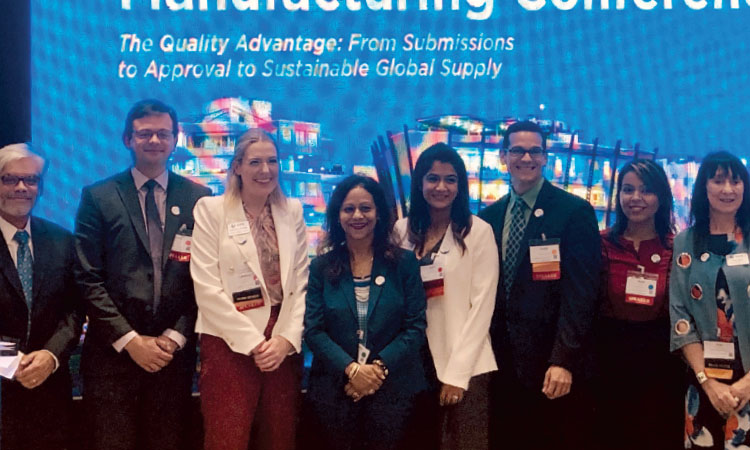Inaugural ISPE Women in Pharma® Event Held in India at the 2019 ISPE South Asia Pharmaceutical Manufacturing Conference
The panel consisted of both women and men working for manufacturing companies, service providers, and regulatory agencies, representing different countries and career stages. This diversity of perspectives was evident in an insightful discussion.
The panelists were:
Moderator:
Session Proceedings
Zipp opened the session by offering background information about the ISPE Women in Pharma® initiative and details on its various aspects, including Mentor Circles and travel grants. She issued a call to action to the audience to encourage their women colleagues to become part of this initiative.
Pathak shared insights about working in the US and India as a woman leader, including distinctive aspects of her experiences in each country.
Thakur spoke about her own career journey from studying and living in India to moving to the US, and how some aspects were unplanned, such as moving from her initial career as a chemist in research and development to joining the FDA.
Sethi shared the challenges associated with unconscious bias that she experienced at the beginning of her engineering career and asked the audience to be more aware of this issue for women engineers who are just starting out.
Both Pathak and Zipp followed up, emphasizing that although the industry has made tremendous progress in achieving gender diversity since they started their careers 30 years ago, challenges persist. Women in the industry still need encouragement and empowerment.
Churchward shared his perspective on how diversity and culture can impact conduct in compliance or inspection. Teams of empowered and diverse individuals can facilitate critical thinking and reduce bias. This enables robust decision-making based on quantitative risk management to ensure product quality, while also contributing to an “enabling environment” for personal development. Churchward reflected that this approach is also applicable to inspection teams; specifically, the skills and perspectives used to assess compliance will differ as teams operate in different cultural environments.











